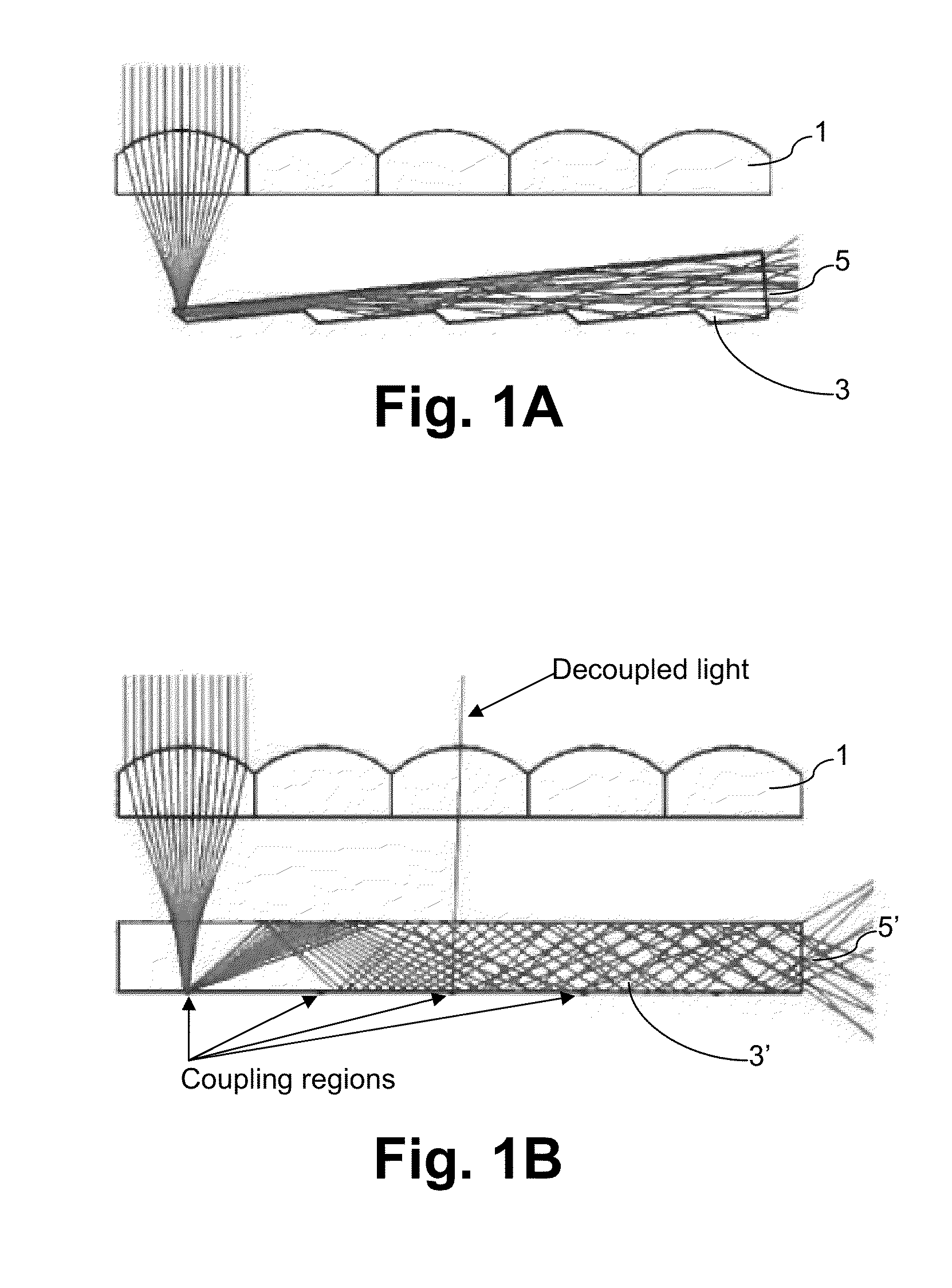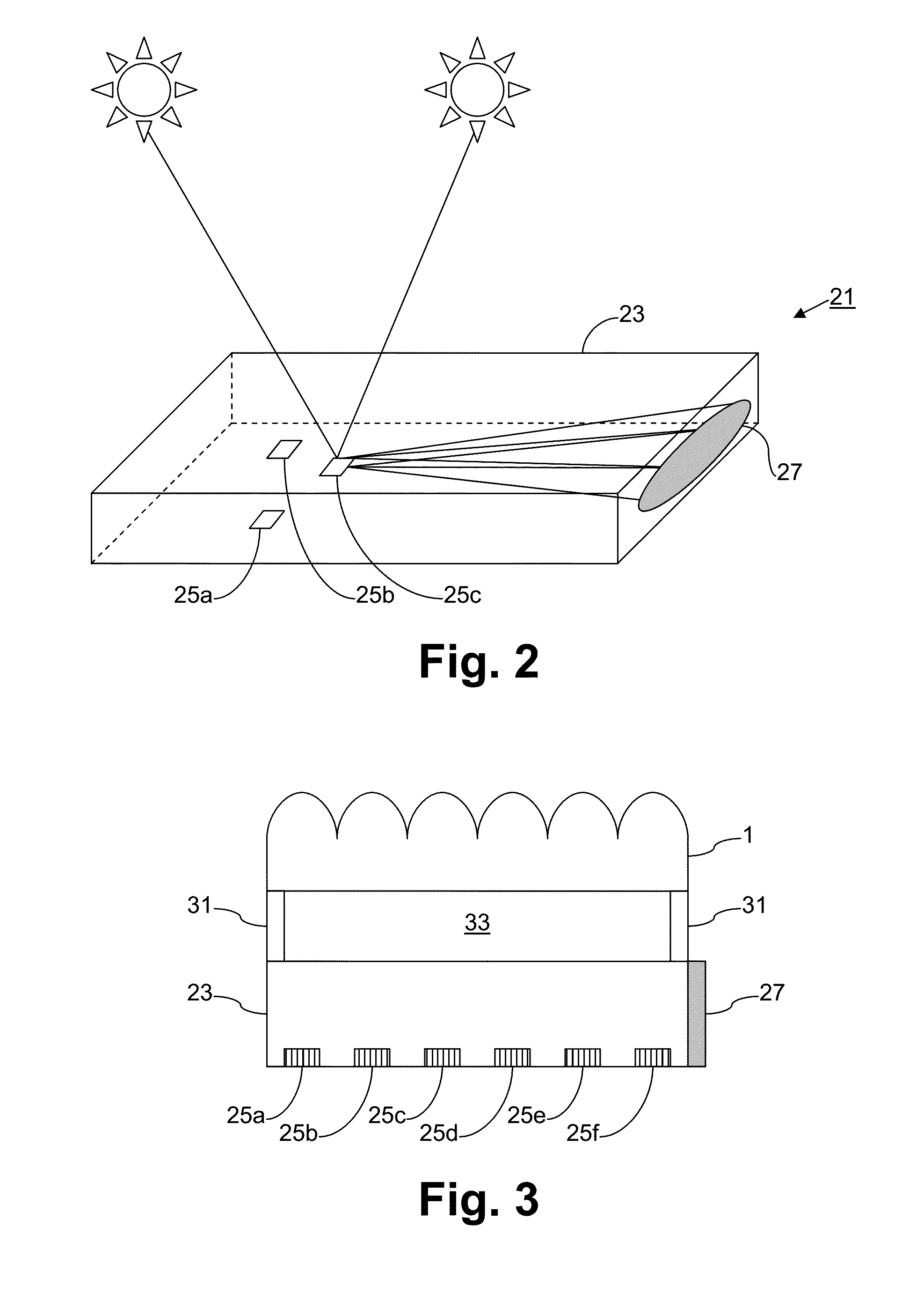Concentrating photovoltaic skylight based on holograms and/or methods of making the same
a photovoltaic skylight and hologram technology, applied in photomechanical equipment, pv power plants, instruments, etc., can solve the problems of large-scale connectivity and cost concerns, system cumbersome integration into windows, and large number of c-si wafers tending to dominate the cost of the overall photovoltaic module, so as to reduce the quantity of costly, and reduce the quantity of expensive.
- Summary
- Abstract
- Description
- Claims
- Application Information
AI Technical Summary
Benefits of technology
Problems solved by technology
Method used
Image
Examples
Embodiment Construction
[0020]Certain example embodiments relate to an alternative approach for planar concentration by replacing multiple non-imaging secondary optics and their associated photovoltaic (PV) cells with a single multimode glass waveguide connected to a shared PV cell. Sunlight collected by each aperture of the arrayed primary optical element may, for example, be coupled into a common glass slab waveguide using spatially localized re-directing features such as holograms, prisms, gratings on surface 2, scattering features in the bulk of the glass waveguide, and / or the like.
[0021]In certain example embodiments, once scattered or diffracted, incoming rays that exceed the critical angle defined by Snell's Law propagate via total internal reflection (TIR) within the waveguide to the exit aperture, which may in certain example embodiments be provided at the edge of the slab. Because TIR is a complete reflection with negligible spectral or polarization-dependent losses, this arrangement advantageous...
PUM
 Login to View More
Login to View More Abstract
Description
Claims
Application Information
 Login to View More
Login to View More - R&D
- Intellectual Property
- Life Sciences
- Materials
- Tech Scout
- Unparalleled Data Quality
- Higher Quality Content
- 60% Fewer Hallucinations
Browse by: Latest US Patents, China's latest patents, Technical Efficacy Thesaurus, Application Domain, Technology Topic, Popular Technical Reports.
© 2025 PatSnap. All rights reserved.Legal|Privacy policy|Modern Slavery Act Transparency Statement|Sitemap|About US| Contact US: help@patsnap.com



